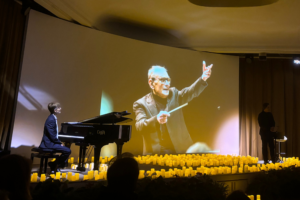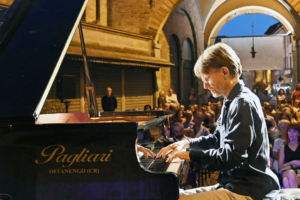
Alma musica: nourishment for the spirit

I’ve always wondered how music can truly be defined. Even as a teenager, reading theory books, I often came across that simple yet, in my view, empty definition: “Music is the art of sounds.”
But what does that really mean? It’s a phrase that says nothing. By the same logic, would painting be “the art of colors”? Just as meaningless. And what does art even mean? If defining music requires first defining what art is, then the definition becomes a maze of words without any real substance.
A simple melody, yet so true
Imagine this scene: a child humming three simple notes—those universal sounds we all know from Ring-aring o’Roses—G, G, E, A, G, E (three notes, with G repeated three times: the magic and perfection of the number three).
In that moment, the child is undeniably making music. Yet, it would be a stretch to call him or her an artist. It’s clear that, in that spontaneous and innocent gesture, there’s no intention of creating art. So, can we really say that music is just the art of sounds?
Alma: the word that nourishes
This is where a beautiful Latin word comes to mind: “alma”, from the verb alere, meaning to nourish, to help grow. Like in “alma mater”, the mother who nurtures and supports.
And this is exactly how I see music: as nourishment for the spirit. Music restores, gives energy, can inspire battle with the blare of trumpets, or, on the contrary, heal conflicts—both within us and around us. It can accompany work, support study, enhance focus, or guide meditation and rest.
Alma musica: the true essence of music
For all these reasons, I believe calling it simply “the art of sounds” doesn’t do justice to its true nature. Music is much more: it is nourishment, energy, and connection.

Pier Francesco Forlenza:
Pianism without boundaries, between tradition and innovation
Pier Francesco Forlenza is proudly powered by WordPress



